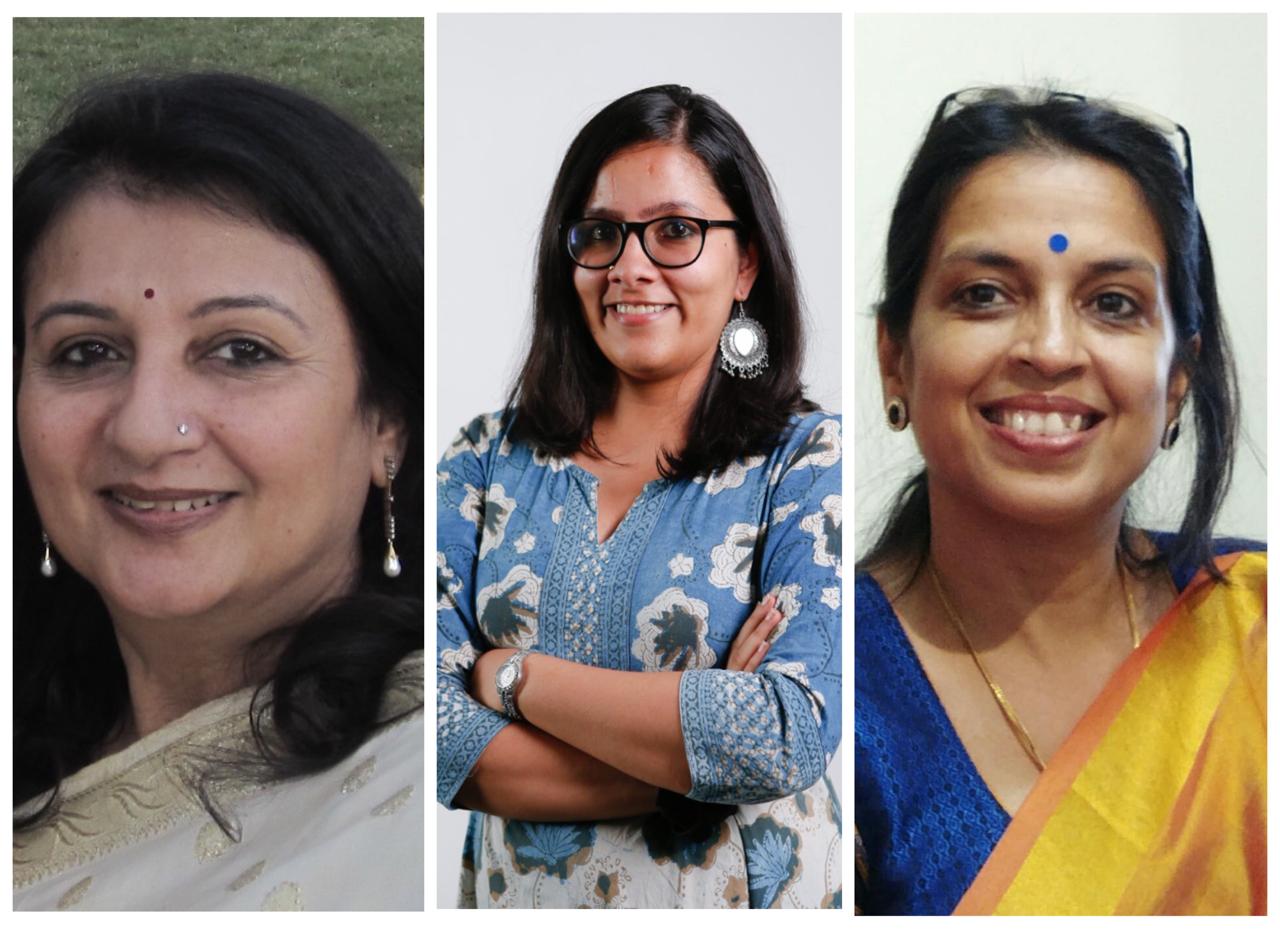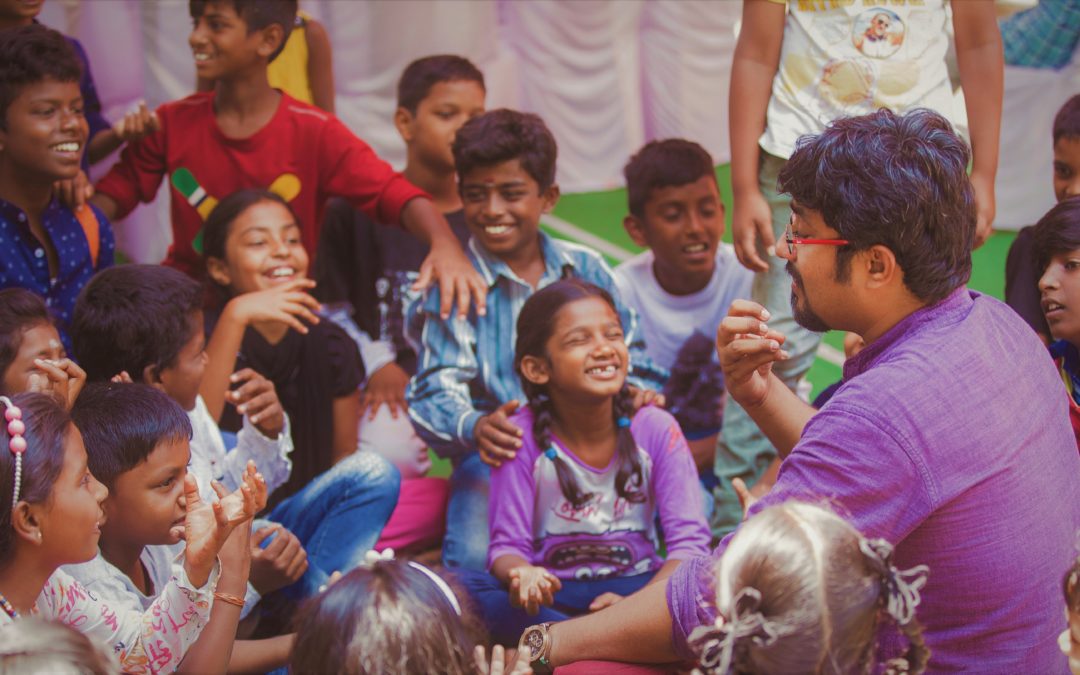To celebrate the International Day of Education 2021, we thought it would be illuminating to ask a few museum professionals to share their views on education outreach and use of digital learning technologies during the pandemic:
How can (or do) digital learning technologies support the mission/vision of the museum you work for?
We chose this specific question to explore the legacies of 2020 and the Covid-19 pandemic, which meant that digital learning technologies became the only way that children could access education. For museums, spaces which strive to reach as many children as possible, the pandemic created a need for digital learning technologies like never before.
The following three museum professionals shared their insights:

From L to R- Sujata Parsai, Lalbhai Dalpatbhai Museum, Ahmedabad; Shilpa Vijayakrishnan, Museum of Art and Photography (MAP), Bangalore; Sahana Mohan, Indian Museum Experience, Bangalore
Lalbhai Dalpatbhai Museum
Digital platforms (of Zoom, Microsoft Meet and the like) opened the doors of the Lalbhai Dalpatbhai Museum Ahmedabad to a large number of young people in Covid times. An option never explored earlier! We began with interactive talks showing objects and gallery views and, in a few weeks, progressed to virtual walks with the curator. A delightful learning for students, a pleasurable education activity for the museum, we gratefully acknowledge the role of technology.
The museum goes to the school.
Museum of Art and Photography
It is MAP’s mission to bring art back to the heart of the community, making culture accessible and available to all. Digital learning technologies support our efforts in this direction by enabling us to reach across geographies and offer our learning resources and programmes to audiences beyond the city. With MAP’s virtual school programmes, for instance, we have now been able to deliver workshops to schools outside the state. Education has always been conceptualised as a key focus at the museum, and in the 21st century that cannot but include the unique opportunities for learning that technology enables. Unlike a physical engagement at the Museum that depends on works from the collections on display, the online space offers our audiences a chance to engage with stories, histories, and ideas connected to the wide range of collections that MAP is custodian to. Our Discover MAP series of downloadable digital resources allow children and families to engage with a range of artists and themes in our collection, for instance. The potential of digital technologies to facilitate new forms of immersive and participatory learning is great, and MAP hopes to tap into this as it expands its digital offerings and audiences.
Indian Music Experience
With a vision to inform and inspire young people, Indian Music Experience (IME) has always tried to provide immersive experiences… Technology has played a huge part in delivering this experience to our visitors. The circular theatre giving an immersive musical experience, a theatre with an overhead screen explaining the relationship between raga and time, gamified interactives, dancing puppets, recording studio, over numerous media players are some of the examples that showcases the use of technology at the IME museum.
For now, at IME, along with stringent hygiene protocols, we have undertaken immediate improvements to the existing interactives such as stylus for touch screens, accommodating personal headphones for media players etc. We are also exploring audio guides through personal mobile phones instead of museum provided devices. Museum sector post Covid-19 will only become more interesting with rapid introduction of technology in all spheres of the museum sector. We look forward to it.
_ _ _
While it is true that the pandemic has put on hold many new ventures and innovative programming that museums across India had in store for students in 2020 due to the Covid-19 pandemic, we cannot deny the many opportunities this difficult period has also afforded us. Museums were forced to quickly adapt to new digital technologies last year, which created new possibilities of access and understanding of their collections . Digital technologies have been helpful in breaking down physical barriers, and opened up pathways to curate ideas across collections. This forced adoption is also pushing museums to think of what more can be done with digital tools to make audience experience in museums more interactive and enriching. In this context, webinars, virtual tours, and accessible activities are also bridging physical distances between people and their museums. This is an exciting new chapter in the growth of museums in India. With the new New Education Policy 2020 in place that advocates for an increased adoption of digital learning tools in student learning spaces and India being a hub of technological innovation and entrepreneurship, Indian museums have a lot scope and opportunities to grow technologically and redefine what museums of the future can look like.
About
Garima Sharma leads the education programming at ReReeti Foundation. Her interests and professional experience revolve around instructional design for informal learning spaces and content development for children and young people. She is curious about ways that science and social studies can come together to make learning more relevant and experiential for young learners.








Recent Comments